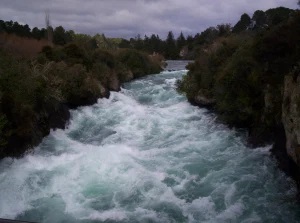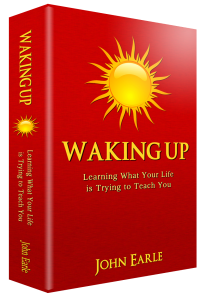In my work with clients, I often talk about and encourage the pause that changes everything. This is the pause we take when, during a difficult emotional encounter, we become aware that we are about to act out unskillfully and, instead of repeating our same old patterns, we withdraw from the situation, ignoring our ego’s insistent demand that we engage. This is a very powerful space creator for changing our built-in robotic behavior. It brings awareness to repetitious, non-skillful actions so that we can take personal responsibility, do inner work, and make a significant change. This voluntary pause is very powerful. Ignoring the ego is a vital part of our spiritual evolution.
Right now, many of us are going through an uninvited pause in our lives. Suddenly, our normal schedule, our everyday life has been interrupted. We may view this as a big inconvenience, but perhaps it is a blessing because, in that “normal” life, we seldom pause and reflect on our inner life. Now, many of us suddenly have a choice for review and observation.
One thing some of us are realizing, as we open to reflection, is that the path we have chosen is no longer deeply satisfying or fulfilling. During this pandemic induced pause, we are more able to consider things like meaning and purpose, and especially, satisfaction. We are most satisfied when we are living a life with a carefully chosen, heartfelt purpose, a life of passion. We begin to see that the current system was not created to provide progress toward this goal. Rather, ours is a system of financial and material merit. It isn’t set up to satisfy inner spiritual needs. In the pandemic pause, our spiritual needs have time to rise to the surface. We begin to explore the possibility of living a more deeply satisfying life.
In order to create a life with deeper meaning, a life that is deeply fulfilling we will need first to create a clear intention. This in itself can be challenging. “What do I really want to do with my life?” The solution to this question is surprisingly easy when we run the possibilities through a special filter. The guru Rajneesh used to say “the mind can only doubt and heart can only believe.” We need to run all our scenarios through the heart! Only the heart will reveal if our choice is true.
Okay, let’s say we have listened to our heart’s counsel and we have arrived at a clear intention for the future. “This is it. This is what I want to create now in my life.” Usually, at this point, more doubt arises presented in a train of reasons for why we can’t possibly make our dream come true. This is a fairly endless list sometimes. How will you get to your goal if all these objections to change and reasons to keep on your current path keep arising? The voice of reason works hard to drown out considerations of the heart.
Most of this doubt arises as a result of our ego’s desire to avoid risk. After all, this is one of its main functions, and the doubting dialogue is one of its main responses to the fear of the unknown. Fortunately, it is at this point of confusion that one of the great spiritual truths can come to our aid.
Rajneesh was a controversial person, to say the least, but he was a very fine teacher. Rajneesh called the Sufi tale, The Man with the Inexplicable Life, “one of the greatest stories,” saying that it belonged to “the very foundation of religious consciousness without which there can be no religious transformation.” It is a wonderful story. You can find the entire story and commentary in my book. Here I am am going to drastically shorten the first portion of the tale and skip the ending portion in order to get to our main point quickly. My apologies. Here goes:
There was once a man named Mojud who thought he was going to end his days as a small official, an inspector of weights and measures. One day as he was walking through the park Khidr, the mystical guide of the Sufis, appeared before him dressed in shimmering green and said, “Man of bright prospects, leave your work and meet me at the river in three days’ time, ” then disappeared. With much trepidation, Mojud told his boss he had to leave. Lots of gossip in town about his behavior was soon forgotten as other stories for gossips came up. Mojud met Khidr at the river three days later, and Khidr said to him, “tear your clothes and jump in the river, perhaps someone will save you.” Mojud did so and so began his path to enlightenment. This is the story of a Sufi saint.
Clue: Khidr, “dressed in shimmering green” represents the heart chakra, the “mystical guide of the Sufis.” Mojud is following his heart.
There is much more to this story, obviously, and you will have to read it to understand the whole story and garner the ineffable essence of the tale. However, the practical nugget we want to focus on occurs right at this point. Mojud has to jump in the river with no guarantees. There is no risk-free path. In fact, an act of pure intent, an act from deep in the heart is always required. It can seem daunting, but for a path to be true, our intention has to be tested, and we are always required to surrender and let go, to forego the voice of reason and all the doubts in our minds; remembering that “the heart can only believe.” To follow our true path, we must “jump in the river” believing the heart and the exquisite perfect truth that resides only there. The truth that we are always safe can only be discovered by taking the risk of failure. This necessary act is always the entry into the greater path. It is always somewhere waiting along our life path. When you find your true path you will have to jump in the river.
Perhaps someone will save you!



 Using four, powerful but simple strategies, learn what the challenging stories in your life are trying to teach you.
Using four, powerful but simple strategies, learn what the challenging stories in your life are trying to teach you. 


No comments yet.